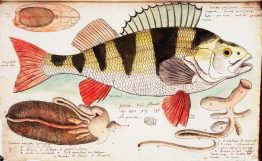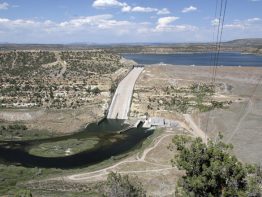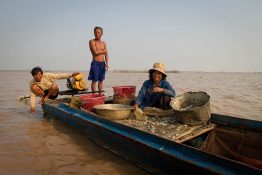More than three centuries ago, a French monk made thousands of drawings of plants and animals, traveling under the authority of King Louis XIV to the French Antilles to collect and document the natural history of the islands. These drawings were often the first ever recorded for each species and were completed in remarkable detail. The illustrations were nearly lost forever during the tumultuous French Revolution, and the volumes compiled by Father Charles Plumier were discovered by chance, found serving as stools for the monks to sit on by the fire in the convent where he lived.
Read the Q&A at UW Today »Fish to benefit if large dams adopt new operating approach
Thousands of dams built along U.S. rivers and streams over the last century now provide electricity for homes, store water for agriculture and support recreation for people. But they also have downstream impacts: They reduce the amount and change the timing of flowing water that fish rely on for spawning, feeding and migration. Recognizing that many large dams are here to stay, a UW team is investigating an emerging solution to help achieve freshwater conservation goals by re-envisioning the ways in which water is released by dams.
Read more at UW Today »Interdisciplinary UW project seeks sustainable blueprint for hydropower dams
In Southeast Asia along the Mekong River, the debate is over when and how — not whether — dams will be built. The river and its tributaries support what’s likely the largest inland fishery in the world, worth more than $2 billion annually. Every day, 60 million people or more rely on the Mekong for food and their livelihoods. In the coming years, nearly 100 hydropower dams are slated to be built along the main stem of the river’s 2,700-mile stretch and its connected tributaries.
Read more at UW Today »Loose skin and slime protect hagfishes from sharks
Researchers from the University of Washington, Chapman University and University of Guelph have published new research showing how hagfishes — an ancient group of eel-like animals found at the bottom of the ocean — survive an initial attack from predators before they release large volumes of slime to defend themselves. Results show that hagfish skin is not puncture resistant; instead, it is both unattached and flaccid, which helps avoid internal damage from penetrating teeth.
Read more at UW Today »New research shows hydropower dams can be managed without an all-or-nothing choice between energy and food
Nearly 100 hydropower dams are planned for construction along the tributaries and main stem of the Mekong River’s 2,700-mile stretch. The river, one of the world’s largest, flows through Burma, China, Vietnam, Laos, Thailand and Cambodia. It is an economic engine for fishermen and a food source for millions of people worldwide. While the dams are expected to provide clean energy to the region, if not managed properly they also have the potential to offset natural river patterns, which would damage food production, supply and business.
Read more at UW Today »





